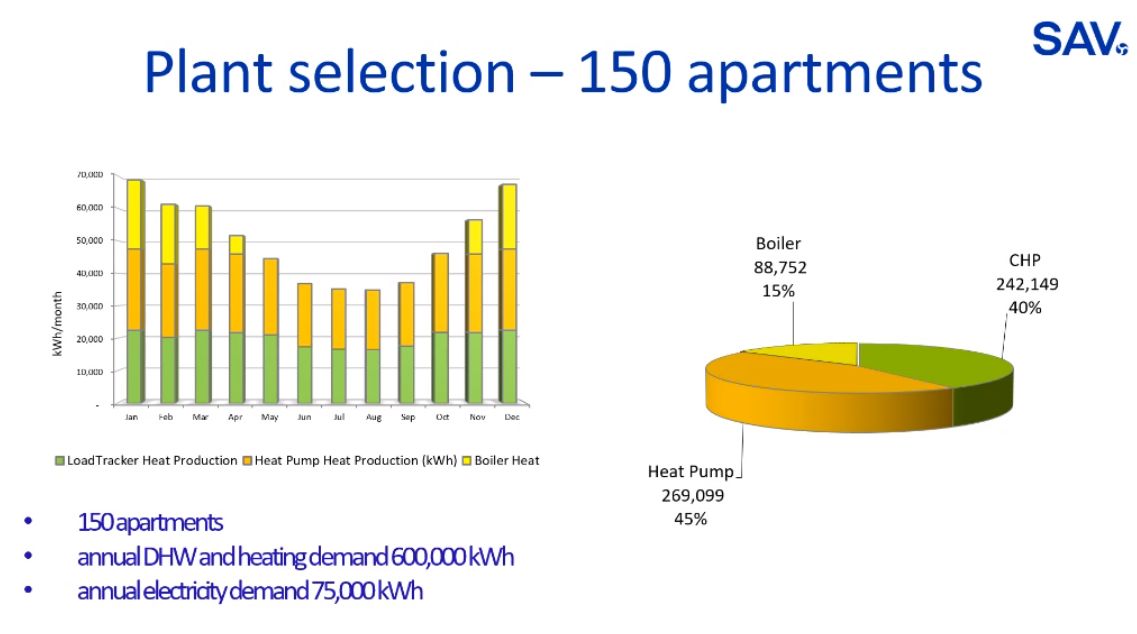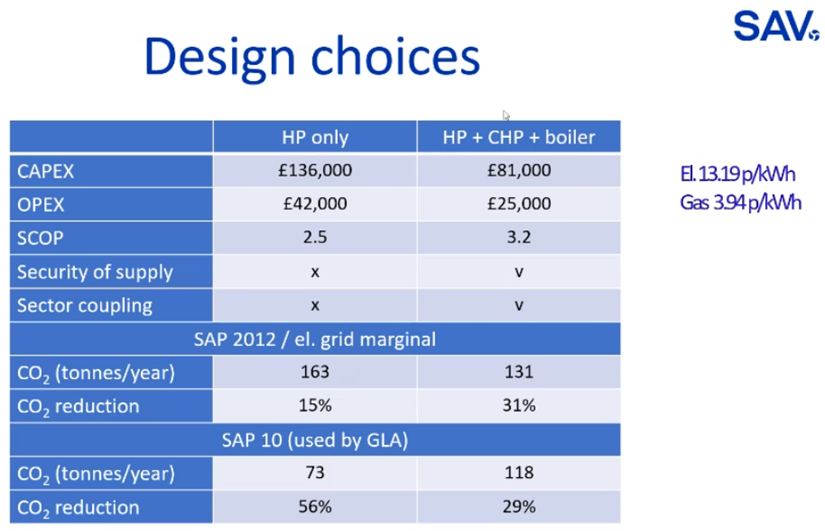While loo roll and hand sanitiser have been sometimes difficult to find, one thing not in short supply at the moment is opportunities for online learning via seminars, webinars and CPD sessions. Adam has been following a series from SAV on district heating (links below) with particular interest given the recent publication of draft amendments to the GLA’s Energy Assessment Guidance. In the first of two blogs on this topic, we reflect on the analysis SAV present, and consider its implications on policy new and old.
We must highlight from the outset that SAV are manufacturers of heat network equipment, and while their products are generally good, they have an interest in promoting heat networks generally. We have no affiliation or interest in SAV; we do sometimes specify their equipment when appropriate. We have endeavoured to provide an independent interpretation of their information here.
A brief history of heat networks
Before discussing their analysis, some historical and technical context will be useful for anyone not intimately familiar with district heat (DH) networks. The principle is simple enough; typically new housing will have one heat source per dwelling – a small gas boiler or increasingly, a heat pump. With district heating, the plant for a number of buildings is centralised, and one large boiler (or usually, a set) or heat source heats water which is circulated to the connected buildings via underground pipework. Centralising the plant can in certain circumstances create efficiencies in terms of both plant capital and energy. Typically, each building or dwelling will have a heat exchanger and suitable metering.
Five or ten years ago, the phrase on the lips of everyone involved in district heating was ‘4th generation’; as we write this in 2020, it’s all about the 5th generation. Much like mobile phone networks, improvements to the technology arrive in waves. The history of district heating goes back further than you might think.
If Heat Networks were detectives, the first generation would be Sherlock Holmes. In the late 19th Century, the idea of heating many buildings from a centralised source was pioneered in New York, utilising high temperature and pressure steam for distribution and coal as the heat source. Operating temperatures exceeded 200°C, pipes were poorly insulated, if at all, so distribution losses were incredibly high. This technology was deployed until the 1930’s and incredibly, some such systems are still in operation.
The second generation is therefore Poirot, an altogether cooler character. Victorian style steam was out, and high-temperature hot water was in. Because the water was pressurised, temperatures were close to or slightly higher than 100°C. Coal still featured heavily, but later, some systems employed combined heat and power and heat storage. These systems are often found in the former Soviet bloc, and were built until the 1970s.
If we had to choose one detective to sum up the third generation, it would be Angela Lansbury, for no better reason than her clearly being the only 80’s detective worth watching. Pressures were lower so temperatures were kept below 100°C, and technological innovations such as pre-insulated pipework and off-site fabricated plantrooms were introduced. As well as reducing distribution losses, the lower temperatures allowed the use of renewable sources including geothermal heat which is impractical at smaller scales.
The fourth generation was mainly developed around 2010, in Denmark and other Scandinavian countries, so we would give joint honours to Sarah Lund and Saga Noren. By this time, the emphasis on reducing temperatures was even stronger, reducing distribution losses further and enabling more efficient technologies such as waste heat recovery and in particular, heat pumps. There is however a limit to how low the temperatures can be pushed in such systems, which is the useful temperature for space and water heating. In reasonably well insulated buildings, radiator or UFH temperatures can be brought down to 40°C or even lower. Hot water needs to be delivered at about 45°C, and if stored, well over 50°C. Systems will typically include plate heat exchangers which require around 5° between the primary and supply sides, so it’s difficult to go much below 60°C.
The fifth generation is personified by Broadchurch and represents a significant shift in strategy. Here, energy is distributed at close to ambient temperatures, dramatically reducing heat losses from networks and boosting heat pump COP’s. To overcome the problems of inadequate temperatures, each consumer/building has a small heat pump.
Central plant: Heat pumps versus hybrids
The central idea promoted in the SAV CPD series was to reduce the design temperatures for new build DH from 700C flow and 400C return to 600C flow and 300C return in a bid to begin to integrate heat pump technology, to provide a more low carbon offering, given the recent changes to carbon emission factors moving form SAP 2012 to SAP 10. These factors bear further scrutiny, but the numbers within SAP are one of the main policy instruments available to local government. (See our previous blog on Carbon Factors in SAP.)
It’s also worth highlighting at this stage that the approaches discussed below are considered 4th rather than 5th generation technology. To achieve the 600C primary flow temperature, heat distribution within each apartment must be based on a 500C flow and DHW will only achieve 450C. We will touch on this later.
The holy trinity of energy policy is carbon, poverty and security: how much CO2 is associated with our energy, how much does it cost consumers, and do we need to worry about where it’s coming from.
SAV argue that the trilemma is still best addressed by a mixture of heat pumps, combined heat and power (CHP) and gas fired boilers; a combination, the argument goes, allows consumers and society to benefit from decarbonisation of both electricity and natural gas decarbonisation and be flexible to adapt to future changes. There are various issues associated with decarbonisation of electricity, and arguably little progress has been made in gas decarbonisation to date. We would also challenge the idea of flexibility, given the finely balanced financial models on which centralised systems are often based; although technical possible to swap out one technology for another, it may not be economically feasible for decades.

The SAV analysis is based upon a typical 150 apartment building. They argue for a hybrid centralised plant set up, combining heat pumps, CHP, and gas boilers. Crucially, the heat pump is effectively in series with the boilers, taking the cooler return water and lifting it to only 35°C, (allowing it to run more efficiently, in theory). The gas fired plant takes the output from the heat pump and raises it from 35 to about 60°C.
In this example SAV estimated the annual energy production split to be 45% heat pump, 40% CHP and 15% boiler.

Exactly how these figures have been calculated is not clear, but this feels like the heat pump contribution could be over-estimated, and would bear further analysis.
Compared to the heat pump-only solution, the hybrid approach is likely to be less costly to run based on current energy prices. Much is made of the benefit to the COP of the heat pump. However, the cost of decarbonised gas is likely to be much higher, undermining this benefit. In terms of carbon, this is also a moveable feast. Great strides have been made in recent years with respect to decarbonising the electricity grid, and while this is to be celebrated, further decarbonisation will be increasingly difficult and expensive.

If we take this disaggregation at face value, the CAPEX & OPEX of the 100% heat pump option appear much higher than the hybrid approach. It’s important to note that these figures don’t include capital associated with the distribution pipework and heat interface units, which could dwarf the primary plant cost in some cases.
With respect to carbon, the theoretical CO2 savings, SAP 10 suggests the heat pump-only option is significantly better than the hybrid, due to the very low electricity factor introduced in SAP 10. The hybrid system does not benefit from this effect, as no significant changes to the gas carbon factor are proposed in SAP 10.
Conclusions
This analysis suggests that 4G Networks with heat pump alone is not efficient means of providing a centralised/communal system, but a more relevant assessment would be to compare the 100% heat pump arrangement with the more modern 5th generation ambient systems.
If 5G networks are not permitted by the GLA Heat Network Priority Area then a combination of plant could be the way forward when evaluated against the energy trilemma, but we would argue that ambient systems should be considered alongside higher temperature approaches.
Overall, we feel this CPD series highlights the conflict in the policy at local and national level, from past and present administrations. This has been demonstrated by the GLAs recent draft documentation, which in spite of the recent LETI guidance reinforces their position on heat networks, including the ability for SAP 2012 carbon emission factors to be used for developments in Heat Network Priority Areas (HNPA) and where there is potential to connect to heat networks. The best choices large developments to reduce carbon emissions are complex and continually shifting as our energy supplies evolve.





